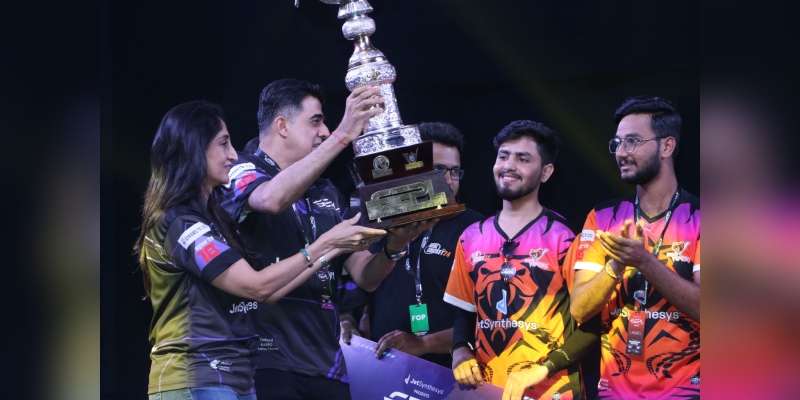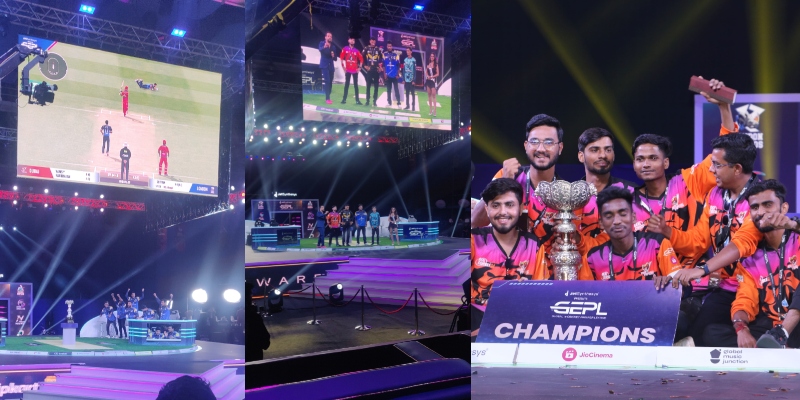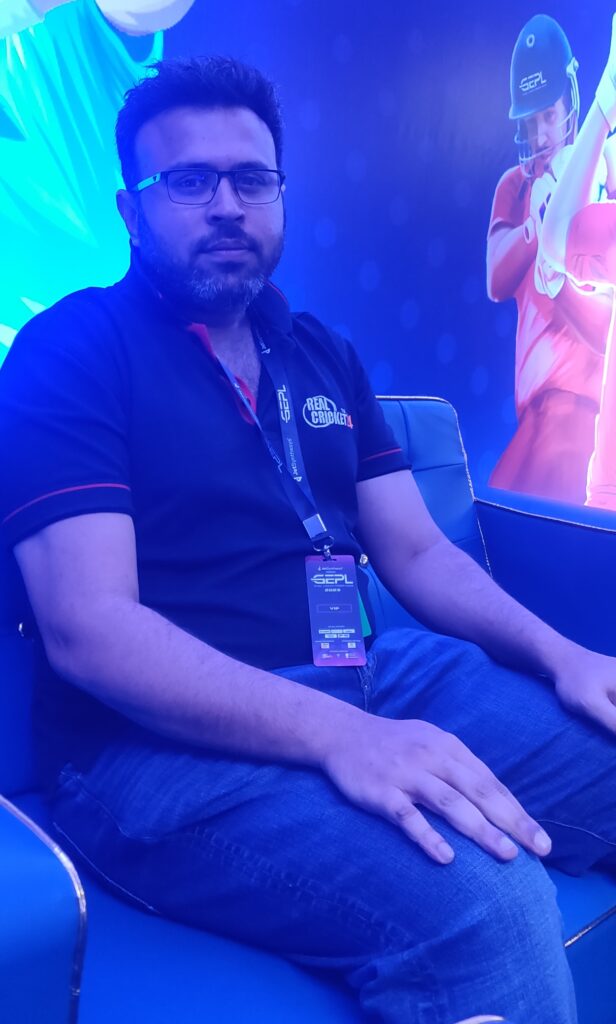While the British introduced cricket to India, it’s not an exaggeration to say that India will be the pioneer in taking e-cricket to the world.
This is a sentiment echoed by JetSynthesys, an Indian company that launched the Global e-Cricket Premier League (GEPL), marking a significant stride in the fusion of esports and cricket. Centered around cricket, GEPL culminated in its finale in Pune, Maharashtra, on 8 December.
The top four teams competed using Nautilus Mobile’s Real Cricket for the coveted GEPL trophy. The electrifying atmosphere at Pune’s Balewadi Stadium saw passionate young supporters cheering for their favoured teams. They animatedly displayed their enthusiasm, waving mobile torchlights and going wild over the gaming influencers who graced the tournament.
GEPL’s format was straightforward; the top 100 Real Cricket players emerged from a pool of over two lakh registrations. Subsequently, 48 finalists, after a rigorous selection process, underwent specialised training to prepare for the finals. The climactic showdown featured the top four teams—New York Apes, London Rhinos, Kolkata Hawks, and Dubai Vipers—with Dubai emerging triumphant. The prize pool of Rs. 2.51 crore rewarded the winning team and standout players.
JetSynthesys founder & CEO Rajan Navani expressed, “We are investing in areas we believe the Indian audience is naturally aligned to and deliver an experience that is best.”
Remarkably, this event hasn’t escaped the attention of brands. Navani highlighted, “Brands are sponsoring and advertising in esports tournaments as they want to engage with the current generation.” GEPL drew sponsorship from a multitude of prominent brands like Oxyrich, Finolex Pipes, Pulsar, Lenskart, Dhruv Global School, AMD, Alienware, Flipkart, Zebronics, Dell, Infinix, Pitaara, Cipseez, Aorus, Fleetguard and LG UltraGear. Navani pointed out, “Traditional media like newspapers and TV aren’t the primary focus for today’s youth, who are actively engaged on digital platforms and social media. Tournaments like GEPL provide brands with a concentrated space to establish a deeper and longer-lasting connection with this demographic amidst the cluttered digital landscape.”
An inclusive event
GEPL stands as an inclusive platform, transcending barriers to participation. Within its ranks was a player who found solace in Real Cricket during a period of bed-rest following an accident. Despite being disabled, his dedication and skill propelled him onto the stage, proudly showcasing his prowess – something he was really happy about.
Moreover, among the 48 players were individuals hailing from remote corners of India, navigating various life circumstances. Some balanced odd jobs, while others continued family legacies, managing local stores or shops. This diverse representation underscored GEPL’s ability to embrace talent from all walks of life, irrespective of background or circumstance.
Creating an employment ecosystem
Since GEPL was an esports tournament, it encompassed a spectrum of roles and activities like emcees, shoutcasters, stat analysts, food and security arrangements, as well as rap performances and gaming influencer appearances.
“Tournaments like GEPL are a catalyst for industry growth. As players ascend to professionalism, they become brand endorsers. With GEPL’s expansion, we’ll witness the emergence of coaches, team owners, managers and talent overseers,” Navani said. He believes that events like GEPL will create an employment ecosystem, something akin to the Indian Premier League.
Making a game esports ready
Anuj Mankar, the visionary behind the first version of the cricket simulation game Real Cricket which he created with his team, finds it surreal to witness the evolution of the game from its inception a decade ago to its current status as a spectator sport. And contrary to people’s belief that a mobile cricket game is predictable, Real Cricket defies this notion. Even though players start with certain constant factors, the game’s outcome remains variable. Mankar shared, “During the development of the game, I used to tell my team that even a developer should not know what will happen next. And we managed to achieve that with Real Cricket.”
We’ve seen esports tournaments for popular international games like CS:GO, PUBG, Valorant, Street Fighter and League of Legends. The biggest achievement with GEPL, however, is that the game is made in India, with the tournament also being organised in India by an Indian company. “We want Real Cricket to be that first esports game from India to go out to the world,” said Mankar, adding how GEPL comes at a time when cricket is penetrating all parts of the world, referring to the T20 World Cup 2024 that will be hosted in USA [along with West Indies].
It’s important to note that not all games are tailored for esports. Mankar outlined two crucial factors that render a game ready for this competitive arena: “The first factor is that the game must have a massive replay value. Another common element for all titles that qualify for esports is that the games are incredibly difficult or impossible to master. You may be the best Counter Strike player out there, but that doesn’t mean that every bullet that comes out of your gun is going to be a headshot. Even though you are a great player, you cannot achieve 100 per cent mastery of these games due to the inherent intricacies and challenges woven into them.”
Mankar highlighted the Real Cricket team’s commitment to consistently shifting the game’s meta, a deliberate effort aimed at pushing players beyond their current boundaries. “That’s the driving force behind the game’s continuous evolution,” he emphasised.
Shiva Nandy, the founder and CEO of Skyesports, a part of JetSynthesys, expressed confidence in GEPL’s success, foreseeing India positioned as the epicentre of esports within the next three to five years. Nandy’s optimism extended to the future, outlining a broader vision, “Our aim is not just to develop a gaming ecosystem; we also aspire to educate industry leaders and stakeholders. We are exploring ways to provide education in gaming and esports, contributing to the growth and understanding of this thriving industry.”
GEPL serves as a mere starting point in India’s burgeoning journey within the realm of esports. With a wealth of talent capable of creating and participating in both games and esports, mirroring India’s immense appetite for gaming, the future holds the promise of witnessing an array of games spawning their own dedicated esports leagues.
(This article is jointly written by Prerna Kothari and Anshita Bhatt)




